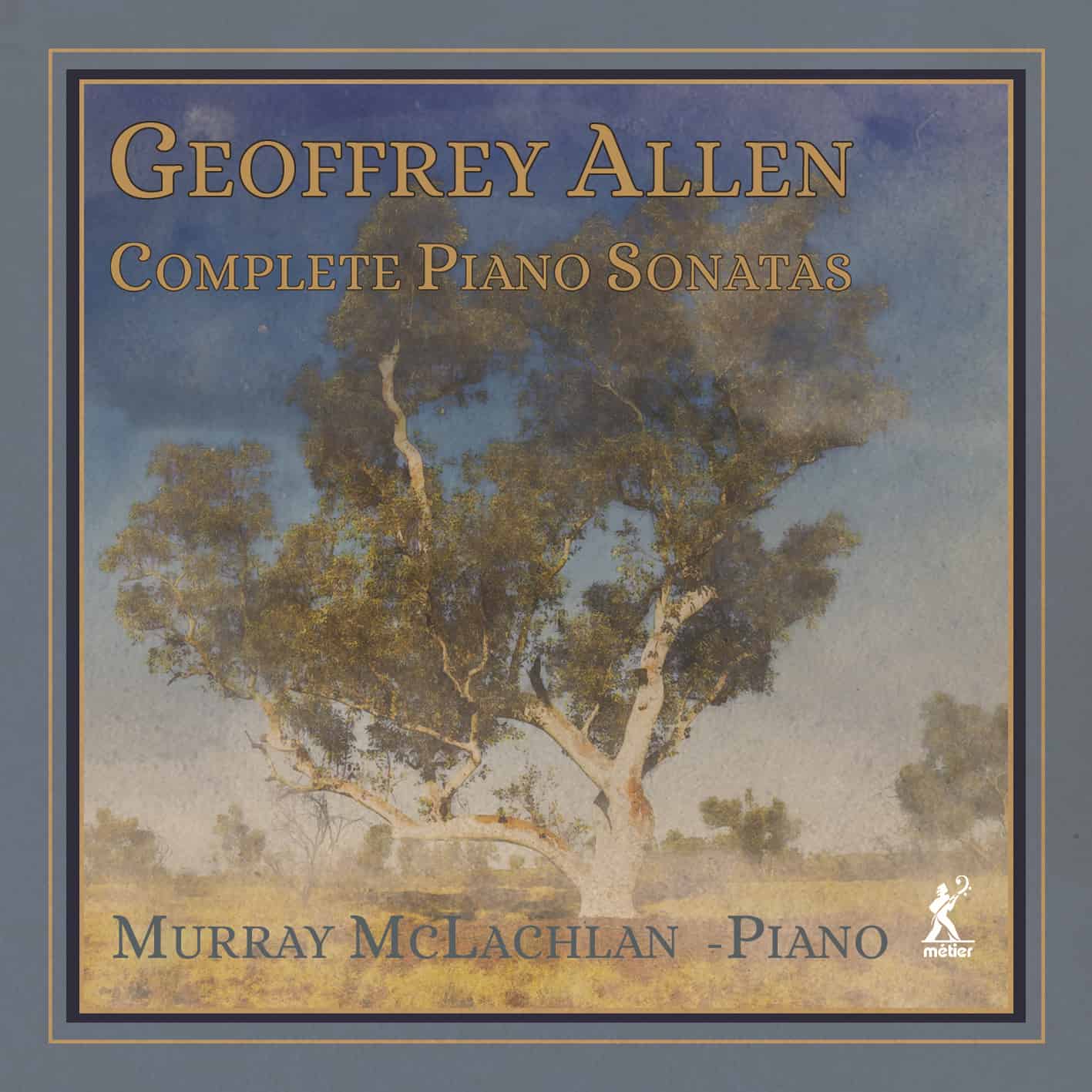Classics Today
The British-born composer Geoffrey Allen (1927-2021) moved to Australia in 1952, where he essentially worked as a librarian until his retirement in 1992. After that, his compositional output dramatically increased, yielding 15 of his 17 completed piano sonatas. The works average about 23 minutes in duration, and generally adhere to classical multi-movement sonata forms, save for the relatively short No. 16, which unfolds in nine seamless parts.
It’s difficult to pigeonhole Allen’s style. A cursory hearing of the Sonata No. 4’s expansive finale at first may evoke Hindemith’s pan-tonal harmonic language, yet the increasingly full-bodied and sequence-driven piano writing is loquaciously “un-Hindemithian”. Sonata No. 3 features disarming tunefulness flavored with dissonant jabs, straight out of the late-period Prokofiev playbook, as do the wide interval leaps and ironic demeanor of Sonata No. 8’s opening Waltz movement and second-movement Presto Giocoso.
By contrast, Allen gets impressive expressive mileage out of the Sonata No. 9 Largo’s two-voice texture, where the left-hand accompaniment leisurely converses in tandem against long-lined high-register phrases. Sonata No. 10’s lengthy Grave finale might be described as the Berg Sonata’s exposition reinterpreted by Keith Jarrett in his best contemplative, hymn-tune mode. Then again, the Toccata section of Allen’s “Rhapzonata” is positively Bartókian, while Sonata No. 17’s opening Moderato is basically leaner-textured Arnold Bax.
Sometimes Allen’s ideas ramble and go on too long for what they have to say, which is why you shouldn’t binge on these sonatas, but rather take in one at a time. It would be hard to find a more sympathetic interpreter than Murray McLachlan. He consistently channels his masterful technique toward musical ends. To give one example, another virtuoso might be inclined to speed through Sonata No. 13’s contrapuntal Presto. McLachlan’s moderation, however, allows the busy lines to emerge with centered evenness and colorful distinction between detaché and sustained articulation. At the same time, McLachlan plays to the hilt the sultry syntax of Sonata No. 2’s Spanish-tinged idiom.
Whether or not McLachlan’s advocacy will inspire pianists to further investigate this repertoire, his love for and commitment to the task at hand consistently comes through this excellently engineered and informatively annotated release.
@divineartrecordingsgroup
A First Inversion Company
Registered Office:
176-178 Pontefract Road, Cudworth, Barnsley S72 8BE
+44 1226 596703
Fort Worth, TX 76110
+1.682.233.4978












![Listen to the full suite of Marcel Dupré’s Variations Sur un Noël, Op. 20 from Alexander Ffinch’s #Expectations release today! listn.fm/expectations [in bio]](https://scontent-dfw5-1.cdninstagram.com/v/t51.71878-15/588904367_2327488161082898_8709236950834211856_n.jpg?stp=dst-jpg_e35_tt6&_nc_cat=105&ccb=7-5&_nc_sid=18de74&efg=eyJlZmdfdGFnIjoiQ0xJUFMuYmVzdF9pbWFnZV91cmxnZW4uQzMifQ%3D%3D&_nc_ohc=BGoHgV_YYfIQ7kNvwHw-krK&_nc_oc=AdnhCz2XLzNs_0K5c-205in3YNZ_Eng2zrdmv-D0d6UfUlspJmpoCM_4EkDmYSAG6xb-vWOtLJ1TxGy-TWhzRcU-&_nc_zt=23&_nc_ht=scontent-dfw5-1.cdninstagram.com&edm=ANo9K5cEAAAA&_nc_gid=kdbj-ll9aTsPyybH_F5nbw&oh=00_AfqKbAJs6bT-Y56s6i5pAEkrvFqclJovY9czTjmIwSwdtg&oe=695E6B6A)